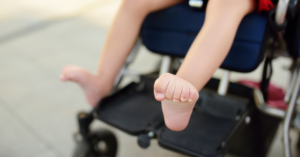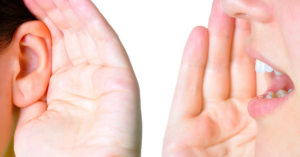
Chorea is a neurological disorder characterized by involuntary, unusual, and abrupt movements of the body that appear to be out of control and without purpose. The word “chorea” is originated from the Greek word “choreia,” which means “dance”, accurately depicting the jerky, dance-like movements shown by people suffering from this disorder.
These movements typically affect several parts of the body, all at once, and can vary in terms of both their intensity and their frequency. Chorea is often related to an abnormality in the basal ganglia, a part of the brain that regulates voluntary motor control and movement coordination.
What causes chorea?
There are various underlying causes for chorea, the most significant of which are genetic or inherited disorders. A well-known example is Huntington’s disease. This inherited type of chorea typically presents itself in mid-adulthood and progressively worsens over the course of one’s lifetime, leading to cognitive decline as well as other neurological problems.
Chorea can be caused by a wide variety of medical conditions as well. For example, Sydenham’s chorea is one type of chorea caused by an immune response to a specific bacterial infection. Other possible causes of chorea may also include metabolic problems, side effects of certain drugs, strokes, and brain traumas.
How to diagnose and treat chorea?
The clinical diagnosis of chorea is based on a detailed examination of the neurological system and the patient’s medical history. Even though there is no cure for chorea, there are treatments that aim to reduce the severity of symptoms, restore motor function, and generally improve the quality of life for chorea patients.
In most cases, chorea is treated with drugs that target dopamine receptors. Physical and occupational therapy can also be beneficial, since they assist patients to adapt to their motor difficulties, increasing coordination and fostering mobility. In addition, people who have difficulties communicating due to chorea might also benefit from speech therapy.
What are the similarities and differences between chorea and ataxia?
Both chorea and ataxia are neurological disorders that interfere with the coordination of movement; however, they have different symptoms and underlying causes.
The similarities are how both disorders disturb motor coordination, making it difficult to control motions and impairing a person’s ability to walk, speak, and carry out daily duties.
The type of movements that are seen, however, is the main difference. The movements of people with ataxia appear as slow, uncoordinated, and unstable movements that mostly affect walking and fine motor abilities. The movements of people with chorea is characterized by involuntary, irregular, and jerky movements that may mimic a dance-like pattern.
In addition, both disorders have different neurological causes: ataxia is linked to abnormalities in the cerebellum, which controls movement, whereas chorea is caused by abnormalities in the basal ganglia which controls voluntary movement.
If you would like to learn more about chorea, take a look at these resources by the National Institute of Neurological Disorders and Stroke and the Cleveland Clinic.
Snapshot Written by: Lin Dong
Edited by: Priscila Pereira Sena
Glossary
Basal ganglia: A part of the brain that regulates voluntary motor control and movement coordination.
Cognitive decline: A person’s ability to think, learn, and remember things becomes less strong over time.
Dopamine: A type of neurotransmitter which acts like a messenger in the brain that helps people feel happy and motivated
Cerebellum: One part of the brain that coordinates and regulates brain and body activities
References
Bhidayasiri, R., & Truong, D. D. (2004). Chorea and related disorders. Postgraduate medical journal, 80(947), 527–534. https://doi.org/10.1136/pgmj.2004.019356
Ehrlich, D.J., Walker, R.H. Functional neuroimaging and chorea: a systematic review. J Clin Mov Disord 4, 8 (2017). https://doi.org/10.1186/s40734-017-0056-0
Farmer TW, Wingfield MS, Lynch SA, et al. Ataxia, Chorea, Seizures, and Dementia: Pathologic Features of a Newly Defined Familial Disorder. Arch Neurol. 1989;46(7):774–779. doi:10.1001/archneur.1989.00520430068020
Rossi, M., Perez-Lloret, S., Cerquetti, D., & Merello, M. (2014). Movement Disorders in Autosomal Dominant Cerebellar Ataxias: A Systematic Review. Movement disorders clinical practice, 1(3), 154–160. https://doi.org/10.1002/mdc3.12042
Vale, T. C., & Cardoso, F. (2015). Chorea: A Journey through History. Tremor and other hyperkinetic movements (New York, N.Y.), 5, tre-5-296. https://doi.org/10.7916/D8WM1C98
Read Other SCAsource Snapshot Articles

Snapshot: What is Spasticity?
Spasticity is a condition where muscles involuntarily stiffen, impeding normal smooth movements. Spasticity can present in varying severities with varying impacts on daily life. For example, minor spasticity resulting in Read More…


Snapshot: What is Articulation?
Articulation refers to the ability to produce speech sounds using the tongue, lips, jaw, and the roof of your mouth. All of these organs are also known as articulators. The Read More…


Snapshot: What is Resonance?
In speech-language pathology, the term resonance refers to nasality in speech. In other words, how nasal a person’s speech sounds. When someone is congested, they likely sound hyponasal, or not Read More…









